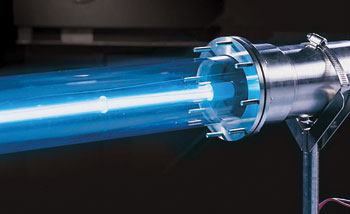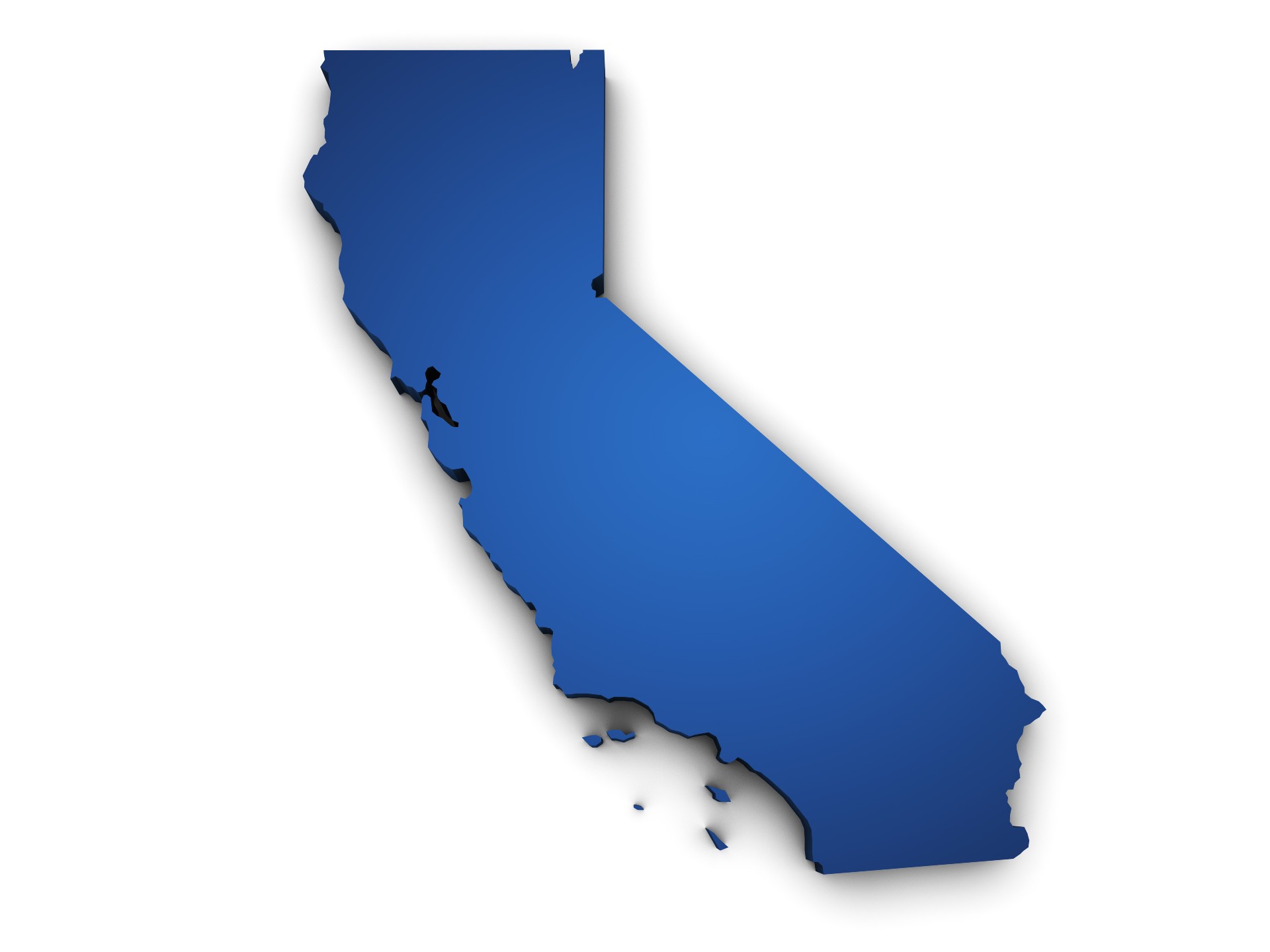Jim Monks used to lose a lot of sleep over his smelly pool. “I would have to come in at 10 p.m., superchlorinate the pool, wait one full filtration system, race home to catch a couple hours of sleep, then come back in at 3 a.m. to dechlorinate,” says the director of maintenance for the indoor pool at the Lake County Family YMCA Central Branch in Vernon Hills, Ill.
Today though,Monks is sleeping soundly through the night, thanks to the installation of ultraviolet, or UV, technology at his pool. “It’s simple. You plug it in and it does all the work itself,” he says.
Already in widespread use around Europe and Australia, UV technology is helping an increasing number of indoor pool and waterpark operators rest easier in the United States. Advocates say UV systems, in conjunction with sanitizer, disinfect and maintain a constantly clean body of swimming water. They also do a better job at wiping out pesky viruses and bacteria chlorine sometimes only hobbles. And although about 25 percent of the chlorine is destroyed when it runs through UV systems, users end up saving about 20 percent on chemical costs because less chlorine is needed, says Rob Runyon, president, sales and service of CEM in Englewood, Colo.
Now, as more and more facilities discover the benefits of UV, Runyon and others predict its popularity will grow at increasing rates, finding its way into every indoor water arena around the country.
The Trouble with Chloramines
If the testimonials surrounding UV sound infomercial-breathless, it probably reflects the relief operators such as Monks feel in having finally found an answer to stubborn problems that have plagued indoor facilities for years.
First and foremost are chloramines. In high-volume indoor pools and water play areas, swimmers leave behind oils, sweat, urine, and sometimes fecal matter, all of which chlorine rushes to combat. As the chlorine bonds with these residual human molecules, they form chloramines, or combined chlorine, which cause the strong pool odor often associated with indoor facilities, and create eye and skin irritation. They also damage the structure of the pool, wearing out concrete and metal.
Additionally, for all the sanitizing it gets, pool water is still populated with some nasty bacteria: namely cryptosporidium and giardia. Both are resistant to chlorine but sensitive to UV light. Ridding the water of these bacteria is important because they can cause gastroenteritis for several days, says Dr. Chuck Gerba, professor of environmental microbiology at the University of Arizona in Tucson. Giardia can be treated with an antibiotic, but cryptosporidium has no treatment.
Typically though, swimmers are affected by indoor pool water in less serious, albeit equally annoying, ways. For instance, strong chloramines can give swimmers headaches, say experts. Adolph Kiefer, president of Kiefer & Associates in Zion, Ill., compares the smell to that of rotten eggs. “People are getting sick from the odor: lifeguards, teachers, instructors, coaches, and swimmers,” he says.
Previously,the only method of ridding chloramines from bodies of swimming water was drastically increasing the chlorine level in the pool and running through a full filtration cycle before bringing the level down. This process is known as superchlorination or breakpoint chlorination. By regulation, public swimming facilities are not allowed to surpass an established chlorine limit, so the procedure is often performed at night, after the pool is closed to the public. Sometimes the chloramine level is so high, the filtration cycle, which can last around three hours depending on the pool size, has to be run twice through to bring down the chloramines.
“Any pool operator knows the horrors of superchlorination,” Monks says. But what’s really irksome, he says, is that even with the effort of superchlorination, “you can’t get them all. You will never be able to get them to zero.”
UV in Action
That’s where UV comes in.UV technology disinfects water to a near-pure form, which is often bottled and sold as drinking water. But it leaves no residual disinfectant or killing power as with chlorine. Therefore, it should always be used with chlorine, caution experts such as Gerba.
Though it might seem like magic, UV actually relies on precise science. Designed at a specific wavelength to target bacteria, viruses, germs and chloramines, the UV system receives pool water four to six times a day. As the water passes through the system, the UV rays create photochemical and photo-oxidation reactions. These reactions cause something called cross-linking in the nucleic acid molecules of the pathogens. This cross-linking keeps the DNA from functioning and reproducing, unlike chlorine, which only damages the membranes of bacteria and attacks the protein shell of viruses. At the same time, the UV rays destroy chloramines, or combined chlorine, by effectively uncombining it through a complicated chemical chain reaction.
Different spectrums of UV come with different pressure systems. The medium pressure, ideal for treating swimming pools, sends wavelengths of 190 to 350 nanometers, which successfully destroys chloramines and scrambles the genetic code of viruses.
The unit is safe, too — with the bulb fully encapsulated inside the system, out of reach and contact from swimmers. Indoor facilities that have installed the UV system praise its efficiency.
“We turned around one pool where they were fighting problems and complaints,” Runyon says. “Within a day, people were asking what they did. They noticed the smell was gone.”
Monks is equally effervescent. “It’s like having a part-time employee at my facility,” he says. “I don’t have to worry.”
Ozone vs. UV
Ozone is UV’s closest competitor. Ozone works by producing a highly oxidative gas generated on site. Ozone is made by exposing oxygen to UV radiation, which creates an extra oxygen atom. When dissolved in water, ozone combines with organic compounds and destroys their original structure through the chemical process of oxidation. These compounds can be chloramines and other parasites.
Experts say ozone is a good alternative, but the system is more complex than UV. Ozone systems require high voltage, higher heat, dryers, and other components that need more technically savvy operators. Ozone also requires regular cleaning because of the constant drawing of air into the system, says Doug Whiteaker, principal at Water Technology in Beaver Dam, Wis.
The biggest bonus with UV installations is their simplicity and low maintenance, say experts. Typical maintenance involves a change of the light bulb, an event that occurs every 6,000 to 8,000 hours.
Though the initial cost of the system is high — $15,000 to $20,000 for a spa and up to $50,000 for a regular pool — experts say the investment can be well worth it. “The cost per day is pennies because it takes very little energy,” Kiefer says. It also reduces the workload of pool operators who no longer need to superchlorinate the pool on a nightly basis.
And compared to ozone, UV still comes in less expensive. “If you compare that to the price of ozone, it is about a third of the cost of what it would take in ozone to treat the equivalent gallonage,” Runyon says.
UV Catching On
No wonder this relatively new phenomenon is catching on so fast. Whiteaker says he is aware of about 100 facilities nationwide with UV systems, and several U.S. companies are preparing to manufacture them. Currently, four American manufacturers produce the equipment, Kiefer says.
What took so long for the technology to cross the Atlantic Ocean from Europe?
Monks attributes the delayed acceptance in the United States to the catching on of any trend, which usually starts on the coasts and moves inland. But he believes UV will grow in popularity quickly.
Others foresee the adoption of UV systems growing beyond waterpark and high-capacity facilities. “We’ll see them in larger pools as there are opportunities to control the manufacturing costs for these units,” Whiteaker says. “We’ll start seeing them translate down into motel pools and spas and smaller volumes of water.”
As glowing testimonials keep mounting, that prediction seems more and more likely. Take Donna Kezeske. “We test our water four times a day, and it’s been top-notch,” says the business manager and aquatics specialist at the Lodge at Cedar Creek in Sheboygan, Wis. Her 50,000-square-foot indoor waterpark runs through 200,000 gallons of water with a maximum capacity of 1,000 bathers.
In fact,indoor waterparks are a growing market for UV. Peter Simon of Neuman Pools in Beaver Dam, Wis., says every new waterpark his company is building includes a system. “Any indoor facility with moderate to high levels of bather capacity are getting one,” says the senior designer, sales and design.
But they’re equally popular at traditional indoor pools. Just ask Don Burton. “The most noticeable thing was it drastically reduced bad chloramines,” says the aquatics director at ProSports Club in Bellevue, Wash. His club recently installed one unit on the family spa and another on the recreational pool, which hosts about 600 kids a week, and is planning to add one more to the children’s pool.
Now that professionals are beginning to realize that there’s a superior alternative to superchlorination, Monks believes it’s only a matter of time before UV technology becomes the norm. “It will be stupid not to have this in your facility,” he says.



